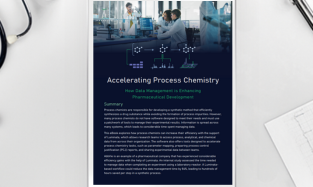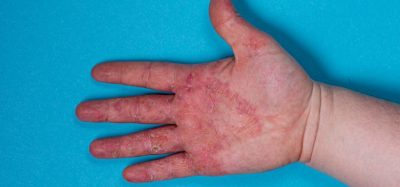First bispecific antibody approved in EU to combat leading causes of vision loss
Posted: 20 September 2022 | Hannah Balfour (European Pharmaceutical Review) | No comments yet
Roche’s Vabysmo® (faricimab) has been approved in Europe as a four-monthly treatment for wet age-related macular degeneration and diabetic macular oedema.


The European Commission has approved Roche’s Vabysmo® (faricimab) for the treatment of neovascular or ‘wet’ age-related macular degeneration (nAMD) and visual impairment due to diabetic macular oedema (DME) – two of the leading causes of vision loss worldwide.
“Many people with nAMD and DME struggle to keep up with the monthly eye injections and physician visits, often associated with current standards of care, and unfortunately their vision may suffer as a result of undertreatment,” explained Professor Ramin Tadayoni, head of the ophthalmology department, Lariboisière, Saint-Louis and Rothschild Hospitals, Paris, France, and European Society of Retina Specialists (EURETINA) president elect. “For people in Europe living with these conditions, today’s approval offers the first new mechanism of action in over a decade; one which could improve and protect their vision with fewer injections over time.”
Roche stated that Vabysmo is the only injectable eye medicine approved in Europe with Phase III studies supporting treatment at intervals of up to four months for people living with nAMD and DME. With the potential to require fewer eye injections over time, while also improving and maintaining vision and anatomy, Vabysmo could offer a less burdensome treatment schedule.
“The approval of Vabysmo in Europe is the result of years of pioneering research from Roche ophthalmologists and scientists, who are deeply committed to improving outcomes for people with retinal conditions,” added Levi Garraway, MD, PhD, Roche’s Chief Medical Officer and Head of Global Product Development. “We are delighted to offer people in Europe this first-of-its-kind treatment option and are working to bring Vabysmo to people with nAMD and DME as soon as possible.”
The approval is based on four Phase III studies involving >3,000 patients across the two indications: TENAYA (NCT03823287) and LUCERNE (NCT03823300) in nAMD at year one, and YOSEMITE (NCT03622580) and RHINE (NCT03622593) in DME up to two years.
The studies showed that people given Vabysmo at intervals of up to four months achieved similar vision gains and anatomical improvements compared to aflibercept given every two months. The totality of data across all four studies at two years showed that more than 60 percent of people treated with Vabysmo were able to extend treatment to every four months, while improving and maintaining vision. Additionally, up to two years, people with nAMD and DME treated with Vabysmo received 33 percent (10 versus 15) and 21 percent (11 versus14) fewer median number of injections compared to aflibercept, respectively.
Vabysmo, a bispecific antibody, engineered to target and inhibit two disease pathways linked to a number of vision-threatening retinal conditions. It works by neutralising angiopoietin-2 (Ang-2) and vascular endothelial growth factor-A (VEGF-A), to restore vascular stability and thereby reduce inflammation, leakage and abnormal vessel growth (neovascularisation) more than inhibition of VEGF-A alone. This sustained blood vessel stabilisation may improve disease control, vision and anatomical outcomes for longer.
About neovascular age-related macular degeneration
AMD is a condition that affects the part of the eye that provides sharp, central vision needed for activities like reading. Neovascular or ‘wet’ AMD (nAMD), which develops when new and abnormal blood vessels grow uncontrolled under the macula, causing swelling, bleeding and/or fibrosis, is an advanced form of the disease that can cause rapid and severe vision loss if left untreated. Worldwide, around 20 million people are living with nAMD – the leading cause of vision loss in people over the age of 60.
About diabetic macular oedema
Affecting around 21 million people globally, diabetic macular oedema (DME) is a vision-threatening retinal condition associated with blindness and decreased quality of life when left untreated. DME occurs when damaged blood vessels leak into and cause swelling in the macula – the central area of the retina responsible for the sharp vision needed for reading and driving.
Related topics
Antibodies, Biologics, Clinical Trials, Drug Development, Drug Targets, Regulation & Legislation, Research & Development (R&D), Therapeutics
Related organisations
Roche, The European Commission (EC), The European Society of Retina Specialists (EURETINA)
Related drugs
Related people
Related diseases & conditions
diabetic macular oedema, neovascular (wet) age-related macular degeneration









